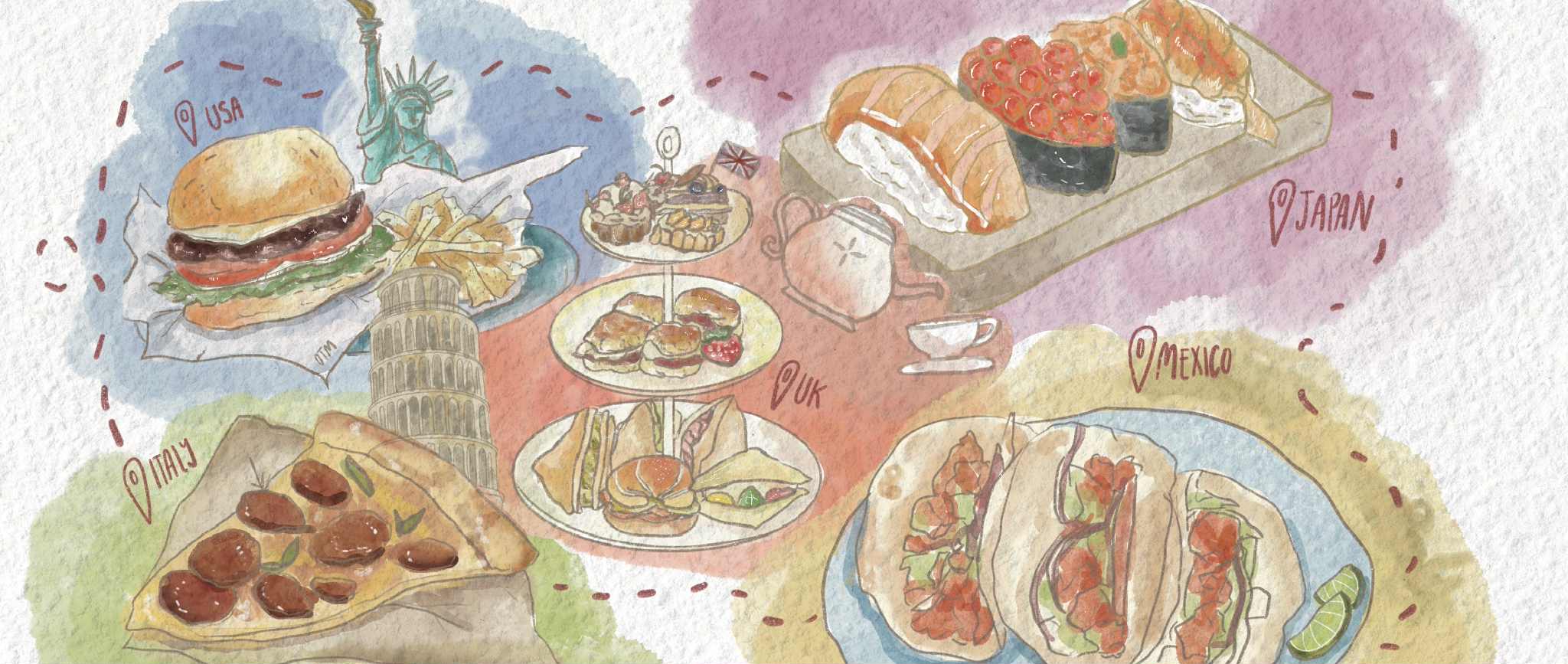How does Douglas Adams arrive for coffee? If he were like the Montecitans stopping by Pierre Lafond’s, he would show up in an SUV, a luxury car or a luxury SUV. The basic cup of coffee at Pierre Lafond’s costs $1.25 and is called “organic French roast.” It tastes exactly like McDonald’s coffee or organic crank case fluid, not that the drivers of SUVs seem to care.
I expected more from Adams than an SUV. I wanted to see him skip out of a spaceship, materialize or even just walk. This is a guy who wrote The Hitchhiker’s Guide to the Galaxy and has managed to make Life, the Universe and Everything much more entertaining. So, I wondered, how would he arrive?
Black Mercedes.
Adams is 6 feet 5 inches tall with intensely round eyes. He hadn’t had a good day. His daughter was sick, and the croissant he was eating at 5 p.m. was lunch. Life hasn’t been bad for the 52-year-old Adams, though. He travels the world, his nine books have sold over 15 million copies and the oft-delayed “Hitchhikers” movie is now being produced by Disney and has the director of “Austin Powers” signed on.
“The perennial movie, which has been about to be made for about 20 years and is even more about to be made now,” Adams said. “But we shall see. I wish I had never thought of doing it as a movie. I’d have about 10 years of my life back.”
For the first time in over a decade, Adams is working on a book.
“There was a point where I just got massively fed up with it. My books tend to use up ideas at a ferocious rate,” he said. “I never intended to be a novelist to begin with. So I decided to go and do a whole bunch of other things. … The consequence of that is I have a huge backlog of story ideas, and now the sort of panic is, ‘Can I do them all in the rest of my career, given the speed at which they’re arriving at the moment?’ The other panic, of course, is the perennial writer’s problem of application. I think I have more fear of writing than most writers.”
The new book is not a Hitchhiker’s book – there are already five of those – or a Dirk Gently book, but “it will be recognizable in style to anyone who knows those books.” It also won’t be The Salmon of Doubt.
“I abandoned [The Salmon of Doubt] about halfway through because I just thought it was getting too dull,” Adams said. “Since then, I’ve now got lots and lots of different story lines waiting for me to turn them into books. One of them I shall apply the title Salmon of Doubt to, but I don’t know which one yet.”
In 1990, Adams, with zoologist Mark Carwardine, wrote Last Chance to See. It’s one of his hardest books to find and his favorite. When Adams – who has lived in Santa Barbara for the last two years – speaks today at UCSB, it’s the book he’ll talk about.
“I do talks around most of the rest of the country,” Adams said. “So I was very keen to do one here, just to sort of say, ‘Hi, here I am.’ ”
Adams gives a lot of speeches, usually about high technology to large companies.
“I actually much prefer doing this particular one, which I only ever usually get to do at colleges because it’s funny, but big corporations don’t particularly like to hear about protecting endangered wildlife,” he said. “You lose a lot of money to endangered wildlife.”
Last Chance to See started as a magazine article for the World Wildlife Fund. The group sent Adams to Madagascar, where he met Carwardine. Adams wrote about aye-ayes, an endangered species of nocturnal lemurs that look like a cross between a bat, a monkey and a very surprised infant.
“At the time, it was thought that there was only about 15. They’ve found a few more so it’s not quite so endangered, just very, very, very endangered,” Adams said. “The whole thing was completely magical.”
So magical that Adams and Carwardine spent the next year traveling the world and seeing endangered animals, like flightless kakapo parrots in New Zealand and baiji river dolphins in China. The last twenty dolphins will become extinct when the Chinese government completes the Three Gorges Damn and destroys the dolphins’ habitat.
“It’s a desperate thing, not only because another species is lost and the tragedy of that, but because I don’t know why we keep building these fucking dams,” Adams said in a surprisingly forceful British whisper. “Not only do they cause environmental and social disasters, they, with very few exceptions, all fail to do what they were supposed to do in the first place. Look at the Amazon, where they’ve all silted up. What is the reaction to that? They’re going to build another 80 of them. It’s just balmy. We must have beaver genes or something. … There’s just this kind of sensational desire to build dams, and maybe that should be looked at and excised from human nature. Maybe the Human Genome Project can locate the beaver/dam-building gene and cut that out.”
Adams’ reference to the Human Genome Project shows off his newfound scientific knowledge.
“I didn’t know much science when I started writing, but science is now 90 percent of what I read,” he said.
In The Hitchhiker’s Guide to the Galaxy, intergalactic bulldozers destroyed the Earth and humanity. A very different sort of bulldozer destroyed the most successful species the planet had ever known. Sixty-five million years ago, a six-mile-wide asteroid slammed into the Yucatan peninsula, created a 100-mile crater and sent a cloud of searing vapor and dust into the air. That was pretty much it for the dinosaurs.
“I’m rather obsessed with the idea of that comet coming down and it being the single event to which we owe our very existence,” Adams said. “It is arguably the single most dramatic thing to have ever occurred in the world and certainly the one that was the most dramatic event in our lives, in that it paved the way for our existence, and no one was there to see it.”
Dinosaur-killing rocks are classic physics. The newer physics is a little too outlandish for Adams, a man who wrote that the answer to Life, the Universe and Everything is 42. A computer came up with that answer, and Adams said computers will change everything.
“Now that we’ve built computers, first we made them room size, then desk size and in briefcases and in pockets, soon they’ll be as plentiful as dust – you can sprinkle computers all over the place. Gradually, the whole environment will become something far more responsive and smart, and we’ll be living in a way that’s very hard for people living on the planet just now to understand,” Adams said. “I guess my six-year-old daughter will get a much better handle on it. There’s a set of rules that anything that was in the world when you were born is normal and natural. Anything invented between when you were 15 and 35 is new and revolutionary and exciting, and you’ll probably get a career in it. Anything invented after you’re 35 is against the natural order of things.”
Adams has done a bit of everything, from radio, to television, to designing computer games. Not all of them worked out.
“These are life’s little learning experiences,” he said. “You know what a learning experience is? A learning experience is one of those things that says, ‘You know that thing you just did? Don’t do that.’
“At the end of all this being determined to be a jack of all trades, I think I’m better off just sitting down and putting a hundred thousand words in a cunning order.”
Adams writes “slowly and painfully.”
“People assume you sit in a room, looking pensive and writing great thoughts,” he said. “But you mostly sit in a room looking panic-stricken and hoping they haven’t put a guard on the door yet.”
Hopefully, Adams said, what comes out at the end doesn’t try to be literature.
“I always think that literature is best left to the judgments of later generations,” he said. “It’s much better just to be literate and get on with it. I can’t help feeling that an awful lot of stuff we call literature as it’s being written probably will die a death in later years, whereas stuff that’s been motivated by something else other than by a desire to write literature has some other energy or insight or spirit to it.”
Adams will probably be writing for the next few years, before his daughter grows up.
“I think what I’ll do, because there has been talk about me doing a big TV documentary series, so I’ll wait until her hormones kick in, and then I shall go off like a shot,” he said. “I think when she’s about 13 I’ll go off and do a big documentary series and come back when she’s become civilized.”
The interview ended when Adams’ cell phone rang from inside his pocket. In the other pocket, there was a little bit of padded cotton, red trimmed with a giraffe on it. It looked like it belonged to his daughter. His wife and daughter were supposed to have flown to London that night, but his daughter came down with an ear infection. “A serious one, actually.”
It was time for Adams to climb into his black Mercedes to go home and see his daughter.




















